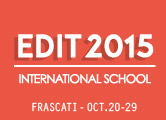Speaker
Mr
Christian Scharf
(Hamburg University (DE))
Description
Measurements of the drift velocities of electrons and holes as functions of electric field and temperature in high-purity n- and p-type silicon with <100> crystal orientation are presented. The measurements cover electric field values between 2.4 and 50 kV/cm and temperatures between 233 and 333 K. Two methods have been used for extracting the drift velocities from current transient measurements: A time-of-flight (tof) method and fits of simulated transients to the measured transients, with the parameters describing the field and temperature dependence of the electron and hole mobilities as free parameters. A new mobility parametrization, which also provides a better description of existing data than previous ones, allowed an extension of the classical tof method to the situation of non-uniform fields. For the fit method, the use of the convolution theorem of Fourier transforms enabled us to precisely determine the electronics transfer function of the complete set-up, including the sensor properties. The agreement between the tof and the fit method is about 1 %, which corresponds to a time-of-flight uncertainty of 30 ps for a pad diode of 200 μm thickness at the highest voltages. Combining our results with published data of low-field mobilities, we derive parameterizations of the drift velocities in high-ohmic <100> silicon for electrons and holes for fields between 0 and 50 kV/cm and temperatures between 233 and 333 K.
Author
Mr
Christian Scharf
(Hamburg University (DE))
Co-author
Prof.
Robert Klanner
(University of Hamburg)

